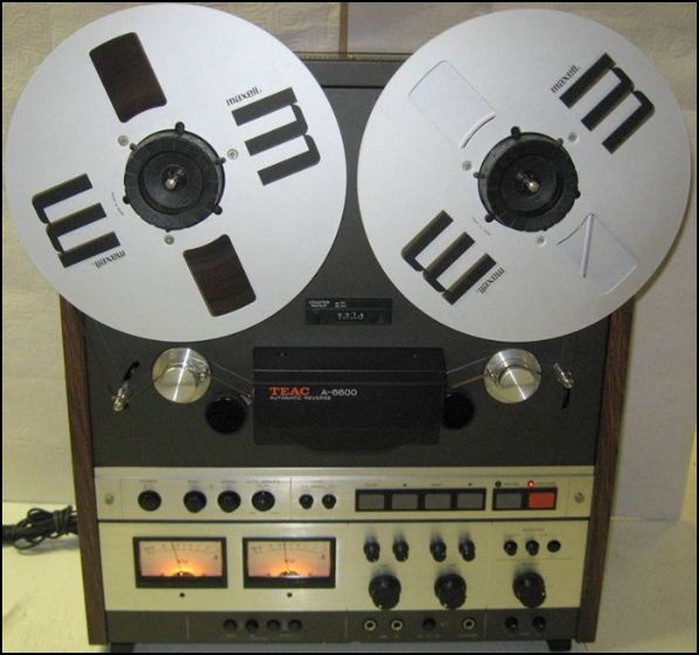
Collectors of audio and recording equipment know the value of a vintage reel-to-reel tape recorder. I recently purchased the 1978 Teac A-6600 which in my humble opinion, is one of the finest Teac decks ever made. I owned the Teac A-2300SD thru-out the 70's and 80's. Reel to Reels were in use before the rise of cassettes and compact discs and offered fast recording and playback speeds without suffering a hit in quality. Recording at faster speeds also proved beneficial to the tape's signal; spreading the signal over a larger area decreased dropouts and various forms of background noise, so a reel-to-reel tape recorder still comes in handy for users who insist on perfect recordings.
Like any magnetic recording medium, reel-to-reel recorders store the full analog wave by using a very small electromagnet (the head) to create a magnetic field, which magnetizes the ferrous oxide (rust) on the tape. During playback, the magnetic data on the tape creates a magnetic field that the head converts back to electrical signals.
Reel-to-Reel offers the advantage of being a quality analog recording medium. While many rave about the clarity of digital recordings, audio signals are analog, not digital. Any digital recording is a modification of the original sound wave that converts it to digital data. When it is time to convert the data back into analog sound waves, the wave is reproduced from the digital data. While this produces a very clean sound wave, it is not exactly the same as the original. For this reason, many audio enthusiasts prefer the true sound of analog recording methods, such as reel-to-reel.
The reel-to-reel provides the highest recording quality among the magnetic recording methods. The earliest form of magnetic recording was the wire recorder, invented in 1900 by Valdemar Poulsen. The wire recorder used a wire instead of a magnetic tape. It was not until the 1930s that magnetic tape was invented and perfected. However, when compared to Compact Cassettes, and 8 Tracks, it is the least convenient to use and is not portable. The higher quality of the reel to reel comes from a combination of the tape speed and width. The higher the tape speed is, the lower the signal-to-noise ratio is. The wider the tape is, yields a better frequency response and lower distortion.
With the cost of vinyl skyrocketing, I plan to use this vintage and superb sound quality technology to record newly purchased Lps thus minimizing wear and tear on the actual albums. In addition, I plan to record albums I don't have or can't find that my music lover circle possesses. For those interested in greater depth with regard to this medium:
http://www.soundonsound.com/sos/mar10/articles/taperecorderadvice.htm

 RSS Feed
RSS Feed
